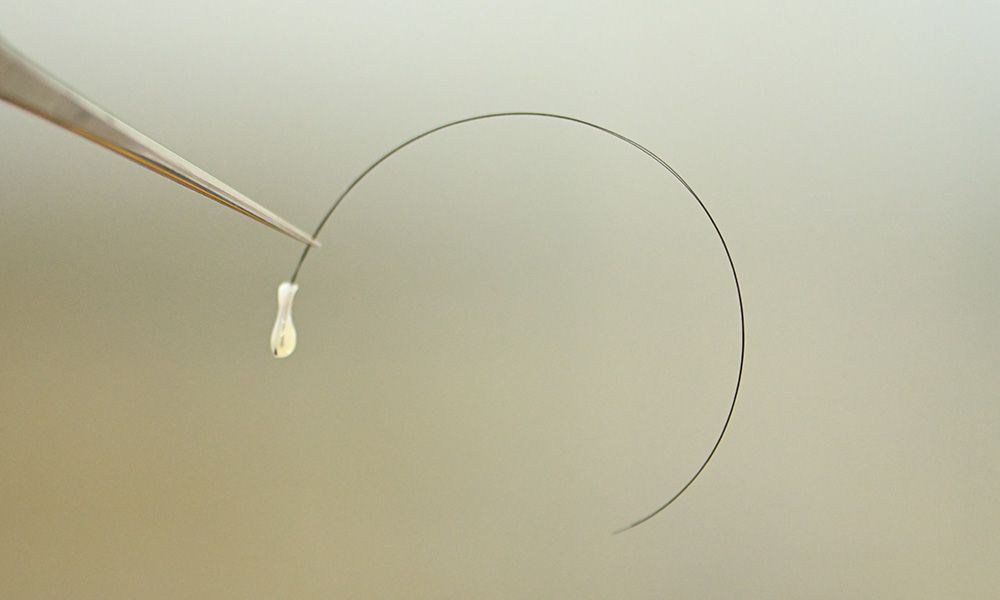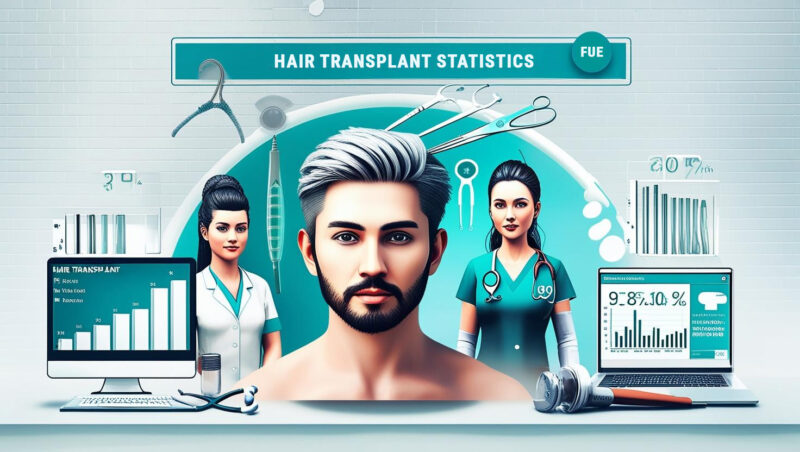Traditional FUE often consisted of shaving the donor area before extraction. As FUE became more popular, the procedure evolved to a partial shaven which only requires the shaving of the donor area. Still many patients demand a technique that requires no shaving at all. The no-shave FUE technique requires the trimming of individual grafts for extraction while leaving the rest of the donor area long.
However, the no-shave technique didn’t provide instant feedback on how the result would turn out. A new technique known as the long hair no shave fue consisted of harvesting grafts without having to trim them. These long hair grafts could then be placed in the recipient site for an instant result (temporarily.)

The advantage of the long hair no shave FUE
While the long hair no shave fue procedure is truly revolutionary, it is a far more complicated procedure to perform. The procedure is more labor intensive. This is not a procedure you want performed by a novice or those lacking certain instruments to complete the job as it should be done.
Feedback
*Immediate feedback on the result to expect
Donor Area
No need to shave or trim the donor area
Recovery
Fastest recovery time without someone knowing you had something done
Ideal
Ideal for someone attending a wedding or major event shortly after their procedure
Minimal Downtime
Redness
Reduced appearance of redness immediately after the procedure
Exprience
Greater excitement post op
The risk associated with the long hair no shave fue
- *increased risk of follicle transection
- Possibility of the hair becoming wrapped in the motorized unit
- The procedure requires more time
- More likely to dislodge a graft immediately post op
- Increased cost
- Fewer grafts can be done in a day
- The grafts will start to shed three weeks post op and most should be gone 4 weeks post op.
Who is a candidate for Long Hair No Shaven FUE?
The ideal candidate for a long hair no shave FUE is someone who is a Norwood 1 or Norwood 2. The other type of candidate would be someone that is looking to achieve a full head of hair of the course of multiple stages rather than completing everything all at once. The ideal location for long hair no shave fue is along the the frontal hairline. The hairline will provide instant feedback in the mirror and tends to be where people look first.
Why should I have long hair no shave FUE?
You should consider having long hair no shave FUE if you have an upcoming event. Examples would include family reunions, weddings, or high school reunions. This event should be timed for 7-10 days after the procedure and no further than 21 days post op. After the 21-day mark, the grafts will start to be shed. The majority of the grafts should shed by 4 weeks post op. Therefore, timing your procedure correctly is critical. Too early, you will not completely heal, and too late, the result is no longer apparent.
What to expect after a No Shave FUE?
in 4 days’ time after the initial hair wash. You will want to be very gentle when washing and combing your hair for the first week. The grafts will fall out in 4 weeks time. You will not begin to see new growth until 3 ½ months into your procedure. Every month thereafter, you will experience more growth with a final result at 9-12 months post op.
Things to avoid after a Long Hair No Shave FUE
- Avoid combing your hair for the first 7 days after your procedure
- Do not be exposed to direct sunlight for extended periods of time for 3-6 months. The key is to avoid a sunburn
- Do not wear tight-fitting beanies or ball caps for 1 week.
- Avoid direct water pressure to the grafts and use lukewarm water when rinsing for 1 week.
- No heavy contact sports for 1 week.
- Avoid running your hands through your hair as you could dislodge a graft for 1 week.
New Technology for FUE
The process of hair transplant techniques has changed over time, and today, the tools used have modernized as well. This means that clients can get better results with fewer side effects than ever before.
This is thanks to tools like the PCID and modern trumpet punch.

The Modern Zero-T Punch
The tools used during the transplant process have several impacts on the efficacy of the procedure. Things like the modern Zero-T punch are pivotal in harvesting long hair grafts because they cut down, no pun intended, on transection with a combination of rotation and oscillation.

Under normal circumstances, FUE harvests hair follicles from donor areas with a circular and hollow punch tool and a blade that quickly cuts donor hair out. When surgeons use these tools, an incision is made to remove the strip and cut through hair follicles. But sometimes, during this process, hair follicles get damaged because the hair bulb itself is cut, and in these cases, those individual follicles cannot be used for the transplant process.
Sharp punch tools are required to cut through the skin. However, dull punch tools are enough to dissect hair follicles.
Using this information, new punch tools have been designed to reduce transection. Transection refers to that situation where hair follicles that are cut for transplant do not work properly because of damage. This can happen when a scalpel damages the hair bulb or cuts the hair follicle. It can also happen if the punching graft:
- Has too much pressure when applied
- Is blunt
- Is not the right instrument
Hair transection can be avoided when used with the right tools, like modern the Zero-T punch the PCID tools. The Zero-T is a hybrid punch, sometimes called the trumpet tool, has a flared end that looks like the shape of a trumpet, hence its name. On one end is a sharp outer edge that cuts the skin, and on the other end is the dull inner edge, which dissects hair follicles without cutting through the hair bulb.
PCID and Zero-T Punch Technology
As mentioned the use of trumpet designed tools reduce the number of hair follicles that are not viable. But other technology contributes to the success of the procedures too.
A Powered Cole Isolation Device or PCID is an instrument that runs on power and is used to extract hair follicles with FUE. The PCID is a handheld device that is used in conjunction with the Zero-T punch or any other ColeInstruments punches.

When in motion, this tool can punch through and around the hair follicles at adjustable depths, while rotating and oscillating. The rotation and oscillation allow for precise extraction based on your hair and scalp.
The result?
You enjoy minimized hair follicle transection or injury. In fact, PCID offers some of the lowest rates of follicle transection.
Moreover, the efficacy of the device increases the success of FUE by extracting at twice the speed of manual extraction punch tools.
- With double the rate of extraction, patients can enjoy a shorter procedure time.
- With lower follicle transection, patients can have reduced scarring
PCID punches are also increasing in popularity because the thin walls and serrated tips of the Zero-T punch tools minimize friction against your scalp. With minimized friction, the punch process is more efficient and requires less force from the surgeon. This means less trauma to the hair grafts.
With reduced trauma, your hair follicles remain viable and the scarring remains minimal.
Customization
With the PCID, there are different settings including rotation and oscillation which means that parameters can be preset so that it’s not too high and not too low. If the preset is too high it can damage hair follicles and skin with sharp punches but if it’s too low it can damage skin and destroy the hair follicle because it’s too dull.
A big reason behind the success of this function is that every patient has a different hair structure and different skin so punch settings have to correspond to that skin type. The PCID is the only device that can currently be matched to diverse characteristics for thicker or thinner hair, leathery skin, dry skin, thick skin, or thin skin.
By changing these parameters, not only is trauma to the hair follicle decreased but bleeding is decreased and recovery time is increased. Inputs are easily controlled via a touch screen and the Zero-T punch device reacts to the controls in a way that can be managed throughout the treatment process.
Overall, the angle used is also different which means the surgical procedure itself is more effective. Rather than punching a hole straight down and hoping to avoid damaging the hair bulb in the process, this method of PCID and er-T punch tools makes an incision at an angle and then punches the hole from there. This angled direction is more likely to avoid damage and keeps the incision slightly smaller which reduces trauma to the area and the depth and size of the cut itself.
More Long FUE Q&A
What is “Long Hair FUE”?
Long Hair FUE lets you keep your hair length during the transplant. Using a special tool, grafts are carefully extracted without cutting them short and then implanted for an instant, natural-looking transformation.
No-Shave FUE vs Long Hair No Shave FUE. Which is better?
Both procedures have their benefits for instance. No shave FUE will have a better graft yield than Long hair no-shave FUE. You will also be able to do more grafts in a shorter period of time with traditional no shave compared to long hair. However, the temporary results of the no-shave long hair fue are amazing to look at.








